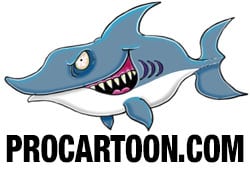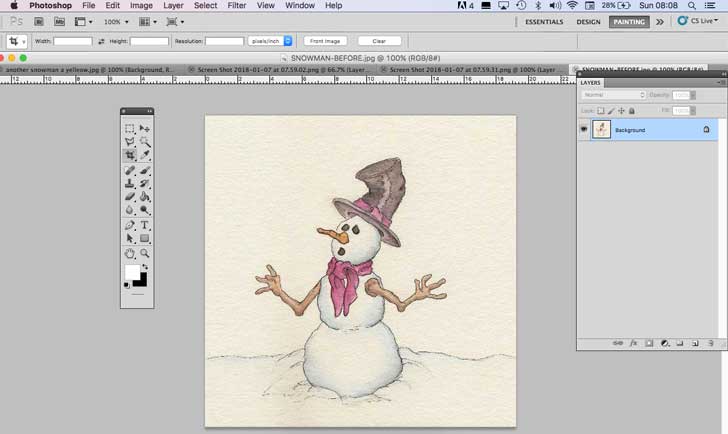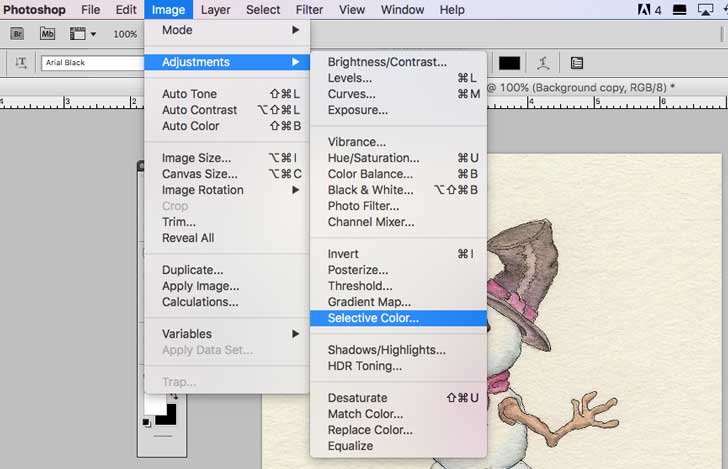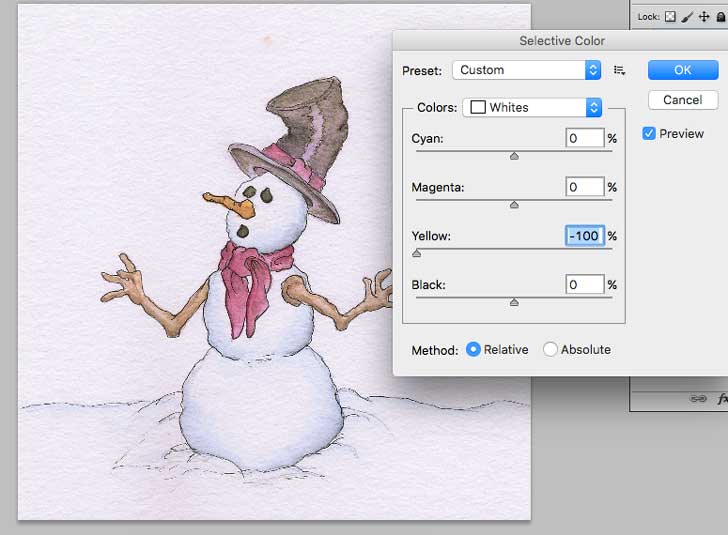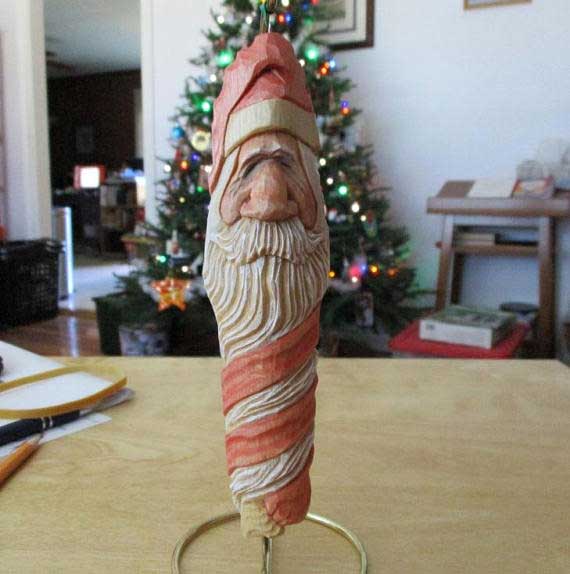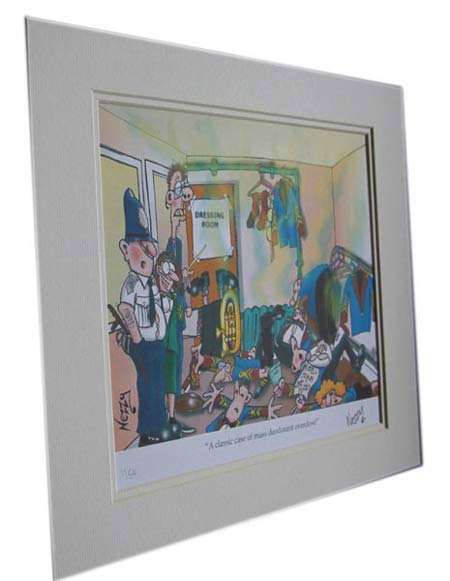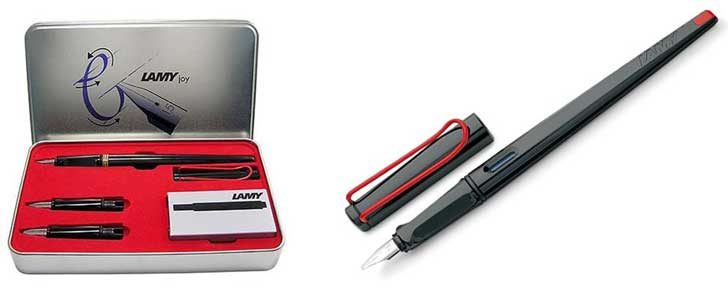Procartoon Podcast 2 – Cartooning Goals for 2018 and more…
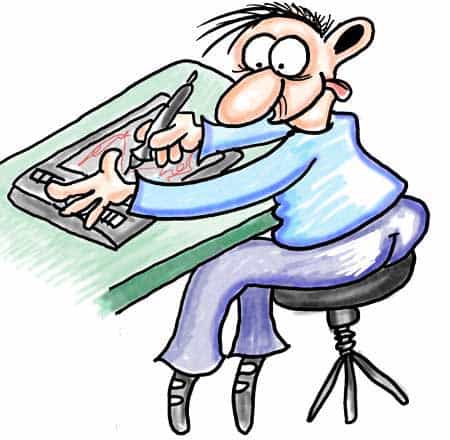 In this Episode of the Procartoon Podcast…I Look forward to Web site and cartooning goals for 2018…A simple, effective way to correct color casts in watercolor scans….Create professional prints of your artwork cost effectively…5 top rated cartooning pens reviewed.
In this Episode of the Procartoon Podcast…I Look forward to Web site and cartooning goals for 2018…A simple, effective way to correct color casts in watercolor scans….Create professional prints of your artwork cost effectively…5 top rated cartooning pens reviewed.
Read the extensive show notes below in conjunction with the Podcast Audio – All links in the Podcast are detailed in the shownotes plus additional images and screen shots to clarify and technical discussion in the text
Procartoon Podcast 2 with Rob Nesbitt
This Episode is Sponsored by JohnOverall.com
WordPress and Web specialists.
Why I am happy to recommend Johnoverall.com
The Procartoon Web Site is Hosted by JohnOverall.com and they provide a second to none service. I recently changed to JohnOverall.com from a well known hosting company in the US because I wasn’t getting the back up service I needed.
I spent too much time waiting for assistance when problems arose and then it was with people who often did not have the level of knowledge to immediately solve an issue. John Overall is quick, extremely personable, an expert in his field and is very reasonable in cost.
I was really impressed that he only charges for the actual time he spends i.e. he charges in hours and part hours so if he spends an hour and ten minutes on an issue thats all you get charged for (Most others would charge two hours once it’s over 60 minutes). I was also really impressed with the speed he works at – again cutting the cost down. His web hosting service is excellent and fast – very fast! He moved 5 of my sites over seamlessly, didn’t charge for converting all five to https (with no ongoing https cost either – unlike most hosting companies) and let me get on with my life while he was doing it.
Moving five sites at once was an experience I was dreading but found it painless and I am so glad I chose John to do the work! I now have the peace of mind that if I need help or have a technical question – it’s there. If you are currently frustrated with with your hosting company I wouldn’t hesitate to recommending JohnOverall.com.
Show Notes for Procartoon Podcast 2
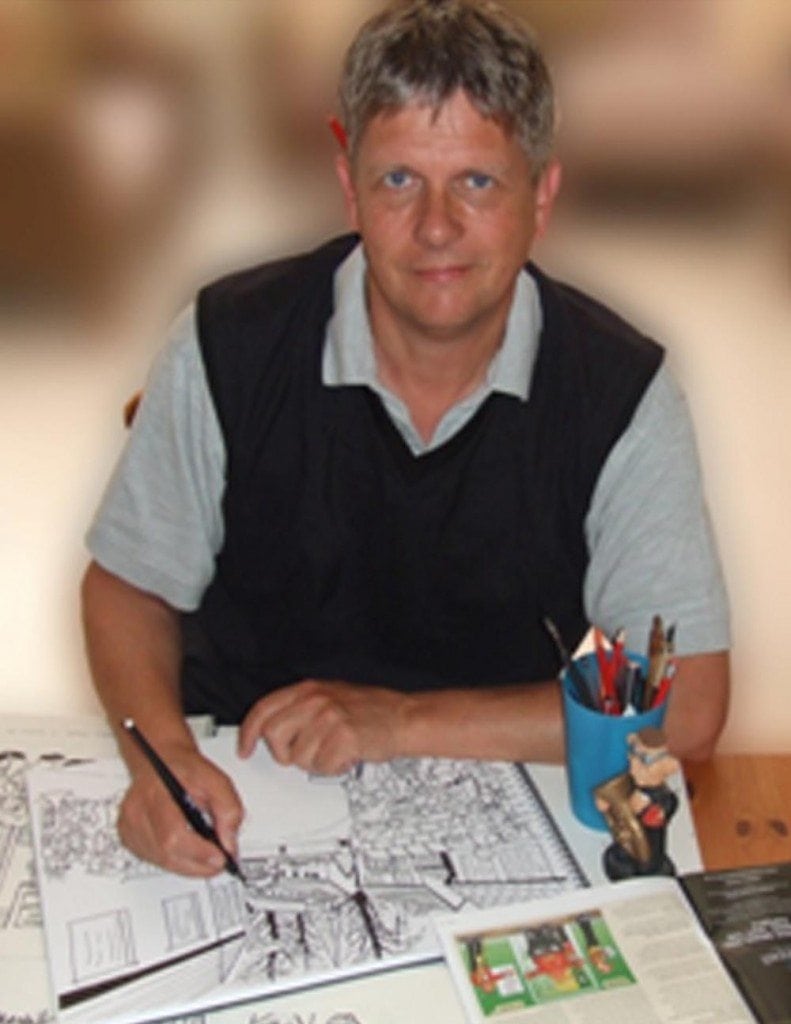 Hi, I’m Rob Nesbitt and this is the procartoon podcast.
Hi, I’m Rob Nesbitt and this is the procartoon podcast.
I look at the tools of the trade, tips, tricks, podcast reviews and interviews and more to help you in your cartooning and artistic work.
What is in this episode of the Procartoon podcast?
In episode 2 of the Procartoon podcast I look at a quick and very effective process in Photoshop that takes away any color casts created when you scan a watercolor image.
I also look at how you can turn your artwork into professionally packaged prints ready to sell without breaking the bank and making a nice little earner.
If you use pens and ink to create your cartoons. I review 5 great cartooning pens and tell you why I love one in particular.
Looking forward to artistic goals in 2018
Before that I think it is a good time right at the beginning of 2018 to think about the year ahead. 2017 was a bit of a mixed bag for me as I currently have two careers running side by side. I was a fire fighter in my previous existence for over 30 years with South wales Fire and Rescue Service in the UK but as soon as I hit 50 back in 2008 I decided to retire and focus on my cartooning and art work.
At the time my children were quite young and I needed to get a stable income in addition to the fire service pension so I created my own fire safety consulting business in 2010. This has turned out to be really lucrative and of late really busy which was great from a financial perspective but totally defeating my objective of concentrating on my artistic side.
It has taken quite a while to get systems in place to be able to do both strands of work simultaneously but by the end of 2017 it was all clicking into place…or so I thought!
There are always spanners in the works throughout any career and half way through 2018 Google threw a whole set! Not only have they hinted that all web sites should be https i.e. secure but they have made some significant changes to their algorithm which has affected many web site rankings including Procartoon.
Amongst other things procartoon is funded partly through Amazon and other affiliate fees and I believe this is what Google appear to have been adjusting in their algorithm. As a result I saw a drop in site visits which wasn’t helped by me changing from http to and https – non secure to secure web site as there are fluctuations associated with such a move.
On top of that Google have appeared to have increased their own sponsored ads at the top of every search you make – pushing other web pages in the top 10 searches below the ‘fold’ i.e. below the visible display on your computer till you scroll down.
On the bright side! I still have hundreds of visits a day from regular readers of Procartoon which I am really grateful for – it means a lot. So even with the problems at the back end of last year things are still looking very rosy.
Goal #1 – Creating more podcasts for Procartoon
So what are my goals for 2018? Well I now have a far better scheduling system in place for Procartoon and my first goal is to produce at least two quality podcasts a month which I hope to increase to one a week.
I love doing these and I think it is a more personal way to get out there and people have busy lives and can listen along while on the go.. Admittedly they are really hard work to put together and the prep and admin takes considerably longer than the podcast air time. If you are thinking of doing a podcast yourself on your own web site there are some great resources to get you started.
If you are thinking of starting your own cartoon or art podcast
I listen to many varied podcasts and there are two in particular that you would find useful. Pat Flynn, an entrepreneur from San Diego runs a fabulous podcast called Smart Passive Income and there is an excellent article on his site devoted to setting up your own podcast with a free downloadable cheat sheet.
Cliff Ravenscraft is the guru of podcasting in my book and his podcast the ‘podcast andswer man’ has everything you need to know aout podcasting. The links to these resources will be in the show notes.
Pat Flynn – Smartpassiveincome.com/podcasting
Cliff Ravenscraft – podcastanswerman.com
Goal #2 – Finish and publish my childrens picture book by June 2018
The second goal is to complete and publish my first childrens picture book. I started this back in August while on holiday in Corfu. I am not one for basting in the sun so while the rest of my family cooked I sat in the shade and thought up a basic story of an unwitting hero who wakes up his village every morning and saves them from a major catastrophe (after he had been sacked for getting them up too early).
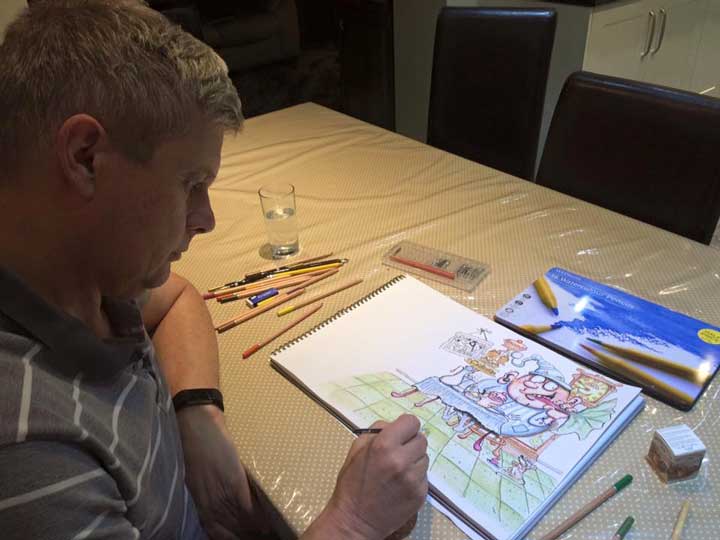
Once I had the idea in place I set the story to rhyme, refined it and then made the first pencil sketches. When I got home the fire safety business went into overdrive and the next time I looked at the project was just before Christmas. I completed the first full color illustration in pen, ink and watercolors and I was away! So it will be done and published by June. There – I just set myself up!
Goal #3 – Draw more cartoons
Next on the list is to increase cartoon output and in particular more cartoons of my own for this site.
I also have a procartoon Facebook page that I put a lot of my work and other cartoonists and artists work on and the likes are growing steadily. If you would like to take a look it’s at www.facebook.com/procartoon
….please like the page.
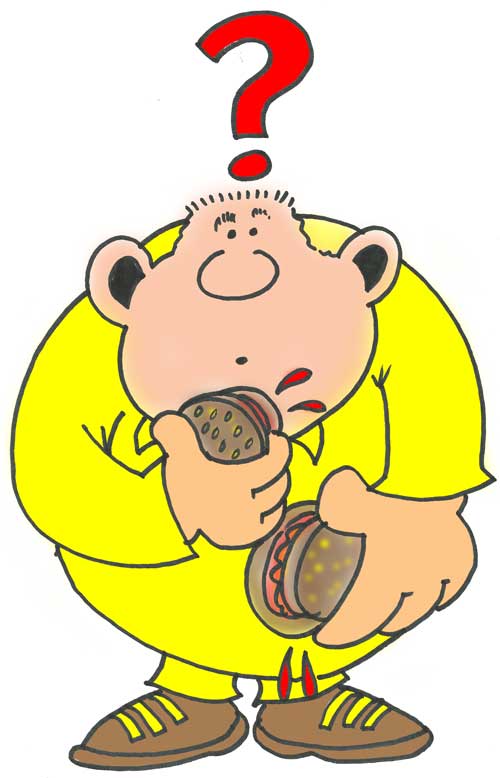 Goal #4 – Keep fit…not FAT!
Goal #4 – Keep fit…not FAT!
Artists tend to sit down a lot and I can get absolutely lost in cartoon la la land for hours at time.
During 2017 after realizing I had reached 15 stone! I made the effort to exercise and eat the right stuff and it worked.
I lost a stone and a half and feel so much better. The big advantage is that I seem to be able to think and perform better creatively.
Christmas came and I fell off the wagon!
So my goal for 2018 is to jump right back on it – which I have and get even fitter in body and mind this year.
Goal #5 – Have more things that I can control
With all the Google algorithm activity last year I am determined to expand the things that I can control and not be so much at the mercy and whims of a search engine company. Creating more of my own products so I am not so reliant on affiliate fees and developing the Procartoon e-mail list is a big goal for 2018.
I have started some interesting cartoon product developments which I will discuss on the site and in future podcasts and will be opening a shop on the site and on other outlets such as Etsy in the near future. The main overarching goal is to take as many eggs out of one basket as possible and create more contacts and much more streams of income.
What are your artistic goals for the next 12 months?
So what are your artistic goals for 2018 and the future beyond? Have you set out a list of goals to plan your cartoon work in the future! If you have any interesting or innovative goals that you are willing to share please let me know and I will include them in the site and future podcasts.
You can see the show notes and the transcription at procartoon.com on the podcast 2 page.
Okay let’s dive straight into the podcast.
Correcting scan color casts in Photoshop and Photoshop Elements
Just after Christmas I received an e-mail from Richard Houlden from Virginia. He asked me to look at a problem that needed fixing. Richard, who is subscribed to the pro-cartoon newsletter is a cartoonist who produces some of his artwork with pen and watercolor.
He had a problem when cataloging his artwork. While scanning the watercolors in electronic format he was finding that the scanned left a slightly yellow tint on the image, particularly noticeable on the background.
He wanted to know if it could be corrected in Photoshop. You wanted to remove yellow cast but leave the original paper texture.
This is a great question for me as I’m currently working on a children’s picture book. I usually work on my Wacom Mobile Studio Pro Tablet but for picture books I use a combination of Water colors, brush, pencil, pen and ink with a calligraphy pen and dip pens.
I initially used my experience in Photoshop. First I tried selecting the background and tried to resolve the issue using a series of adjustments and filters. The result was reasonable but it took too long as the were too many stages involved.
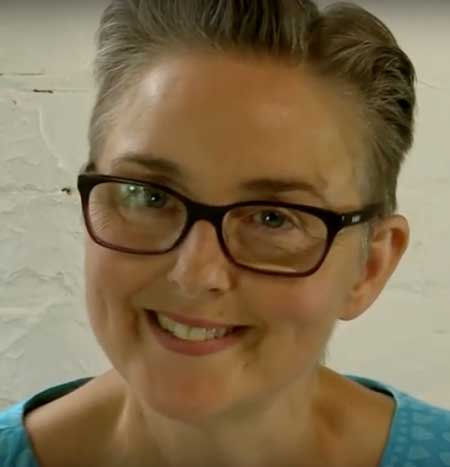
I decided to look for advice from experts on children’s book illustrations. I recently interviewed one of the top UK children’s book illustrators Lynn Chapman. You can listen to the interview on Procartoon.com podcast 1. Lynn has illustrated 30 children’s books over a 17 year. She has produced hundreds of full-color illustrations on paper, which would all require scanning.
I wondered if the publishers of the children’s picture books would have scanned Lynnes artwork. Or would she have done it herself? There was only one way to find out. I fired off an e-mail to Lynn and had an almost immediate answer.
In her response she sent me a simple process to follow using Photoshop. I tried it out on several of Richards watercolor scans and was absolutely amazed with the results – perfect!
Here is the process:
I have included some screen shots to demonstrate using one of Richard Houlden’s cartoons as an example:
First scan the watercolor image at between 300 and 600 dpi dots per inch. 300 dpi is the minimum print industry standard but I often go to 600 dpi to ensure a higher definition so that if I decide to go to a really large print size in the future I can.

Next open the scan into Photoshop.
On the main menu select ‘Image’ …then ‘adjustments’….From the adjustments drop-down menu select ‘Selective Color’…
Next in the selective color menu box leave the pre-set as ‘default’. Select ‘white’ in the countless then adjust the yellow slider.
As if by magic the yellow tint will have gone on the paper texture in the background is still in place.
Save your adjusted image and you are done.
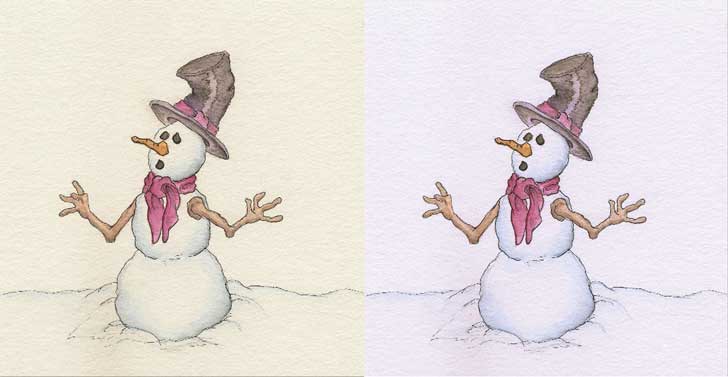
How easy was that?!
Here’s the thing. Photoshop is really complex and you will never remember or know every aspect of this powerful and fantastic software. I keep learning new tricks all the time and this particular one was a gem.
I reported back to Richard and thanks to Lynn Chapman his problem had been solved. His scans were now crisp and clean, maintaining the pattern of the watercolor paper. He now has the means to archive the best versions of his physically created artwork – mission accomplished.
 Richard Houlden’s cartoons to Woodcarvings
Richard Houlden’s cartoons to Woodcarvings
After taking off my Sherlock Holmes Deerstalker hat I decided to take a look at Richard Houlden’s other creations.
I was mightily impressed with what he does with some of his artwork, converting the cartoon designs into stunning woodcarvings. You can take a look at Richard’s work at cartoons2carvings.blogspot.co.uk and on Richards Etsy page.
Again this struck accord with me as I have recently been using wood as to make ‘cartoony’ products and appreciate the difficulties and additional techniques you need to master to move into a different medium. In my case I use driftwood to make cartoon figures.
Richard has a real talent not just for drawing and carving but taking 2D to 3D in such a skillful way is really clever and I hope he makes a real success of his creative venture.
Before I move onto the next topic here’s a shout out to all cartoonists who would like some free advertising for their products or services.
If you are a cartoonist and would like to advertise your services I am setting up a section on Procartoon.com for cartoonists and other artists to showcase their talents. For the first ten that apply will get the free ad placement.
To apply simply contact me, Rob Nesbitt via the contact page on Procartoon.com. Send me an outline of what you do what you have to offer plus contact details and I will send out the format to submit your free ads space which will be a page to yourself plus images of your work, contact details etc.
If you sign up for the Procartoon Newsletter you will be kept up to date with new articles and features as a subscriber you will automatically be entered into our regular prize draws. Just visit the ‘About Page’ on procartoon.com to sign up for the newsletter.
I am also on the lookout for cartoonists to interview on this podcast . The only criteria I have is that either you are a published cartoonists i.e. paid regularly for your work in national magazines, newspapers, online, childrens book illustrations or you have a cartoon related or art related business that would be of interest and relevance to our readers and subscribers.
Send me a short message via the Procartoon.com ‘Contact Page’ and we can discuss a podcast.
OK back to the plot!…
Repurposing cartoons and artwork to make products and money
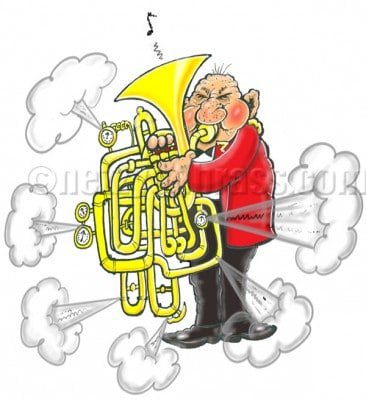
He liked it so much he invited me to become the magazines cartoonist. I get paid to submit the cartoons to the magazine every month for 10 months of the year.
I have a long standing agreement that after the following edition is published I can republish the previopus months cartoon (which I do regularly on my web site nezzyonbrass.com).
Repurposing cartoons can bring in other benefits and there there is always something else you can use a cartoon for to generate extra income.
 Using Your Cartoons to Make Prints That Sell
Using Your Cartoons to Make Prints That Sell
Anything you can print on and sell can be used to generate more income for your business. In the niche market of brass bands I have found a reasonable market for prints of my cartoons.
I will never make a million out of this particular small market but…it is always good to have multiple streams of income and if you can create enough smaller product income streams they mount up.
The other big mistake a lot of business owners have is to have all their paint brushes in one basket! (you know what I mean).
The danger of relying on key word rankings for your web site
I have recently seen many web sites head south because the great and mighty Google has updated its algorithm and sent many affiliate sites plummeting into the depths of despair.
Web sites relying on one source of income such as Amazon affiliate fees are at the mercy of Google – it is a dangerous path to tread. Diversify and Multiply your income streams and you won’t go far wrong.
When I first thought about doing this I looked for a professional to put the prints together and I would just sell them. I didn’t look for too long because the price of someone doing the spade work was prohibitive so I decided to see how much it would cost to do it myself.
Generally I try not to get too involved in processes that take me away from creating cartoons but this seemed the only option or I wouldn’t have been able to launch a product.
So what hardware will I need? I would need a good quality printer for starters. Or would I? Perhaps I could outsource this section of the process and get good quality prints on short runs out right price?
The first few print companies suppliers that I looked cost far too much. Either that or to make it viable I would have to order hundreds of each design. That could end up filling the garage for months or years and probably end up as land fill!
Outsourcing your cartoon and art print copies
As I was just testing the water there was no desire to buy bulk prints of each design. However I did find a company that would print small runs provided that I Would order a minimum number of print sheets.
They weren’t concerned what designs were on each sheet so it was a no-brainer. I submitted all my designs placed two on a sheet and made the order.
The result was a set of great quality prints. The only downside was that I have to cut them to size myself which really wasn’t a big deal. The company I used was Printed.com who were not only really helpful with great customer service but produce top notch quality prints at a very reasonable price. I have had them do Christmas cards and other printed merchandise which I will discuss in a future podcast.
Using a home printer to create your cartoon and art prints
If you have a good printer then this can be the best option. You have the ultimate control over print and demand. The only advice here is use the best ink you can and the best paper. The printer should be capable of processing up to 300g.s.m. (grams per squate meter) paper. If it can’t then look for a better printer.
I have recently changed to an Epsom printer with refillable tanks. The first time I had to refill was a year after I bought it and I only refilled the black. I give this printer a real hammering printing off Christmas Cards, and a continual straem of other documents throughout the year. It has saved me a fortune in ink (cartridges are the biggest rip off on the planet) and the print results are very good.
Framing your cartoon art in a mount / mat
I wanted to put them in a picture mat or as it is sometimes known picture mount.
Again I got a decent price and ordered a relatively small amount of double mat/ mounts. Again it is wise to shop around and like most economies of scale the more you buy the lower the unit cost.
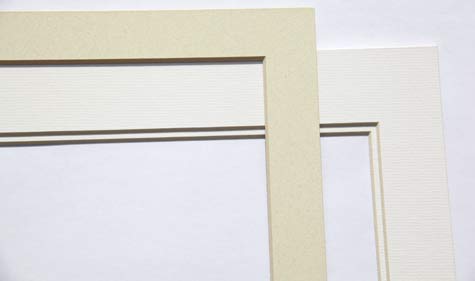
Attaching the print to the Mount Mat requires double-sided tape which was easily sourced from Amazon.
I could’ve used a glue gun but through experience you get too much waste with this method of attaching my mat/mounts to backing board.
Double-sided tape is far more easier to use and gives a neater, cleaner finish. You can also use it to tape the image to the mount matt and you don’t get your fingers burnt on a reel of double sided tape!
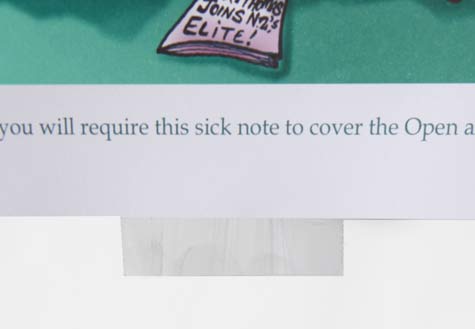
Packaging your cartoon artwork for trade stands and shipping
Last but not least is the packaging. To keep the finished product clean and pristine and visible so that you could sell it on a trade stand the best way is to use clear cello bags. These are really cheap to buy available online and I think essential to give a professional finish.
If you are shipping your prints it’s no good sending them out without substantial packaging. I ship all my prints in rigid cardboard mailers and I’ve never had a return due to damage with this method.
I have seen artists ship their artwork off in paper padded bags – WHY??? It’s asking for trouble. Making all that effort and then on a wing and a prayer not using the correct packaging is like Noah building his Ark out of balsa wood!
Putting the mat/mounts and prints together is fairly simple and I take you through this process in an extensive article on creating prints for sale that I have written which shows you the process in fine detail .
The article also gives you great tips on choosing the size of the prints and the mount /mats to give you a good size without going overboard. I suggest a size that allows you to home print at a decent size.
There are a few formats that you can sell your art in this way. You can sell the original, which will get the most money but only once! You can sell prints of the original as many times as you like but each print will have a much lower price. There is a half way house where you create scarcity by making a print run a limited edition.
If you are not familiar with this term it means that you could limit tour prints in number such as a maximum os 200 prints. Each one is marked with a limited edition number e.g. number 1/200 number 2/200 etc. Limited-edition prints are normally hand signed and sometimes come with a certificate of authenticity. It is basically a marketing strategy based on the old concept of creating scarcity to raise the price. Limited-edition prints fetch more money than straight prints but less than a one-off original.
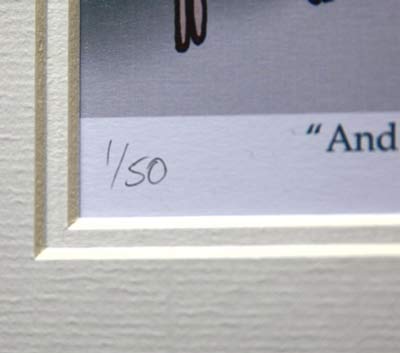
One word of caution if you’re selling limited-edition prints. Make sure you keep really good records off who you have sold each limited edition to and the limited edition number that was a signed to that buyer.
You may not sell the whole limited-edition run for a period of years and is nothing worse realizing you’ve sold the same limited edition numbered to two different buyers!
If you think prints of your work maybe a good way to it generate extra income please see the article that I’ve written which takes you through the process step-by-step. See the full article on creating your own prints here…
My recommendations for the best ink pens for cartooning and other artwork
Okay moving on to great ink drawing pens for cartoonists. A high percentage of cartoonists probably now using graphics drawing tablets. However, there is nothing like and never will be like using a good old pen on paper! I’ve been drawing cartoons for over 50 years and it’s taken me nearly that long to find a pen that I really like and really suits me.
For me there are two things that’s a really important when selecting an ink drawing pen. The first is obvious. It needs to draw exceptionally well! The second may not be so obvious but for me is really important.
If you spend a lot of time with the pen in hand you will know from experience that after a while it can get painful and over time you end up with those tell tale callouses on the side of your middle finger. A lot of drawing pens have a round barrel which to me is not the best shape to hold for prolonged periods.
Here are 5 ink pens which are great for cartoon artwork – I have personally used and reviewed.
They have 5 pens that I have actually used frequently over many years.
The first pen is the Rotring Art Pen which is been around for years.
I know this for a fact because I was presented with this pen as a gift on a musical tour of Bavaria in Germany back in 1992.
I still have the pen and it works just as well now as it did then. It looks stylish.
It writes beautifully and because it looks good and feels good – psychologically makes you draw better.
The second pen is another Rotring Rapidograph Technical pen. I’ve included this because I have a set of these for a long time on producing great cartoons with them but and it’s a big but!
The cap thread feels quite sharp I’m really painful after prolonged use. I would only use this for short jobs. One huge plus for this pen is the quality of the ink, which is exceptional.
The next pen is a throwaway pen where once the ink dries up it goes in the trash. The Staedler pigment liner technical drawing pen gives consistent and brilliant results.
Although they come in a number of nib sizes I generally only use the 0.3mm, 0.5mm and 0.8mm there are other sizes available. I feel these are the three that will offer the most for cartoonist. Great pens and my only criticisms are that they are throw away and quite narrow, which can be quite painful in the hand with prolonged use.
Another great throwaway pen is the Faber Castell Pitt Artists Pen which also offers an excellent drawing finish.
The bar was slightly more chunky in the Staedler but on the downside it is more expensive. So between the two throw away pens in this review I prefer Staedler purely on cost.
The last pen in this review is the LAMY Calligraphy Pen Set which for me is the Rolls-Royce of drawing pens.
The pen is extremely stylish to look at the pen draws amazingly well. The sets comes with 3 nibs of 1.1, 1.5 and 1.9 mm. Included is a set of 5 LAMY Black ink cartridges.
Another nice feature is the brilliantly designed clip to make sure doesn’t fall out of your pocket.
It’s the ergonomically shaped barrel that really sells this pen for me. Instead of the usual round shape LAMY have designed the barrel with 2 grooves on each side which perfectly match the thumb and index finger.
This clever design gives the cartoonist the perfect working experience. No pain no strain but plenty of gain.
I use this pen as my pen of choice and it is wonderful. The only disadvantage with this pen set is that it is the most expensive in this review.
However, I cannot recommend this pen highly enough and is worth it’s weight in gold.
If you would like to see this review in more detail follow this link.
Okay – so in this podcast I showed a great shortcut in Photoshop to remove color casts in water color scans. I also discuss the pros and cons of turning your artwork into prints to sell and reviewed 5 top rated pens.
Don’t forget if you would like to subscribe to the procartoon.com monthly newsletter for automatic entry into future prize draws please visit the ‘About’ page on procartoon.
I hope you enjoyed the podcast, thanks for listening and will talk to you next time.
